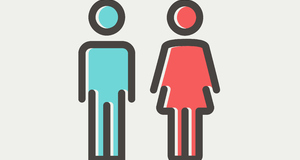How Do I Look? The Impact of Compliments on Self-Perceived Attractiveness
By
2013, Vol. 5 No. 09 | pg. 3/3 | « DiscussionThe purpose of the present study was to examine the relationships between both the gender of the participant and the presence of a compliment on self-perceived attractiveness. The presence of a compliment was found to have a significant positive effect on self-perceived attractiveness, as theorized, but no significant change in scores between genders was yielded during analysis. This implies that, although compliments raise self-perceived attractiveness in all individuals, they do so uniformly across gender lines, and that there is no difference between the self-perceived attractiveness scores between males and females. The findings of the present study completely contradict those of some of the previous literature, specifically about the lack of gender differences. Ashton and Nell (1996) found that women score lower than men on self-perceived attractiveness scales, something which the present study did not confirm with any significance. It is possible, though, that this difference is caused by one of class– the women in the present study were all of college age and in high enough intellectual and socio-economic classes that they may have had above-average scores (Bennett et al., 2008). These results hardly corresponded with the dissatisfaction or worry that women are supposed to endure, as found in previous studies by Calogero and Herbozo (2009) and Hall and Rand (1983). However, as these females in this study are more intelligent than the average population, being university students, it is possible that they simply lack these self-image issues, or perhaps have them to a much lesser extreme than the women from previous studies. Likewise, it may actually be the men that are different; men may have simply been more sensitive to the perceptions of those around them due to being intellectual university students than those who participated in prior research (Cooper & Wade, 1999). Furthermore, it could be argued that these are generational differences, since the participants of the present study have witnessed more women in the workplace than those from decades ago. The current generation is more independent from the generation norms of the past, so perhaps the differences between the two genders have subsided. Like in prior literature, the beauty-related surroundings of the participants were important for their scores. Unlike the negative studies where women were asked to compare themselves to advertisements, the participants in this study were given compliments (Knee, Neighbors, & Patrick, 2004). However, the results were parallel – where negative surroundings led to lower self-perceived attractiveness, compliments led to higher self-perceived attractiveness. Granted, the effect in this study was predicted to be higher in women, but a lack of prior research comparing the genders in that regard led to a lack of understanding of the effects of compliments on males.Assuming that Herbert (1990) was correct in that the gender of the researcher affects how well women respond to compliments, it would be valuable to repeat the present study using all male researchers in order to improve understanding of self-perceived attractiveness. Because women do not appreciate the compliments from other women as much as they do from men, using male researchers may raise the scores of the female participants, thus more difference would be found between the genders, along with a possible significant interaction between the two independent variables. It would also be possible to combine this hypothetical study with the present study, focusing on the effect of the compliment based on the genders of both the researcher and participant. It is possible that participants were not entirely honest when answering the survey. A new questionnaire (or method of administering it) should be used for future studies in order to counteract the awkwardness which many participants admitted to feeling while answering the questions. Because the researcher was beside the participant at all times, the participants felt that they were being watched, and many orally debated whether or not they should be honest due to the nature of some of the questions (many felt as if they were being rude and uncivil when trying to answer honestly). More anonymousness when administering the survey may be a possible solution, or perhaps having the participants turn in their surveys all at once would remove some of the negative emotion and lead to a higher likelihood of honesty. A lager sample size may also accomplish this. The compliment could also have been at fault. Although the compliment is rather general and applicable to most people and outfits, it could have been slightly too impersonal to be noticed by the participants. A pilot study could determine a list of approved and slightly more specific compliments for use in the study, many of which could probably aid in finding more significance in differences between genders, or at least further emphasize the difference between the experimental and control groups for the compliment category. Society values beauty – this is an undeniable fact. For individuals, however, it is the self-perceived attractiveness that defines how much beauty they bring into society. Because of this, this field is only growing – so much of the male perception of beauty has yet to be explored. Possibilities to improve studies like the present study are almost endless, and implications are great – such studies, after all, build on top of one another. Knowing the effect of compliments on self-perceived attractiveness further emphasizes the important of kind words; they do, after all, bring more beauty into this world – one point of self-perceived attractiveness at a time. It is the hope, probably vain, of the researchers that the present study made at least a ripple of significance in the sea that is the study of self-perceived attractiveness, and, more importantly, beauty. ReferencesAshton, N. L., & Nell, K. (1996). Gender, self-esteem, and perception of own attractiveness. Perceptual and Motor Skills, 83(3), 1105-1106. Bennett, S., Cox, A., Fisher, M., & Gavric, D. (2008). Components of self-perceived mate value. Special Issue: Proceedings of the 2nd Annual Meeting of the NorthEastern Evolutionary Psychology Society. Journal of Social, Evolutionary, and Cultural Psychology, 2(4), 156-168. Calogero, R. M., Herbozo, S., & Thompson, J. (2009). Complimentary weightism: The potential costs of appearance-related commentary for women's self-objectification. Psychology of Women Quarterly, 33(1), 120-132. Cooper, M., & Wade, T. (1999). Sex differences in the links between attractiveness, self-esteem and the body. Personality and Individual Differences, 27(6), 1047-1056. Garcia, A. L., Miller, D. A., Mackie, D. M., & Smith, E. R. (2006). Thanks for the Compliment? Emotional Reactions to Group-Level Versus Individual-Level Compliments and Insults. Group Processes & Intergroup Relations, 9(3), 307-324. Hall, J. A., & Rand, C. S. (1983). Sex differences in the accuracy of self-perceived attractiveness. Social Psychology Quarterly, 46(4), 359-363. Herbert, R. K. (1990). Sex-based differences in compliment behavior. Language in Society, 19(2), 201-224. Knee, C., Neighbors, C., & Patrick, H. (2004). Appearance-related social comparisons: The role of contingent self-esteem and self-perceptions of attractiveness. Personality and Social Psychology Bulletin, 30(4), 501-514 Appendix A: Questionnaire
Suggested Reading from Inquiries Journal
Inquiries Journal provides undergraduate and graduate students around the world a platform for the wide dissemination of academic work over a range of core disciplines. Representing the work of students from hundreds of institutions around the globe, Inquiries Journal's large database of academic articles is completely free. Learn more | Blog | Submit Latest in Psychology |


















